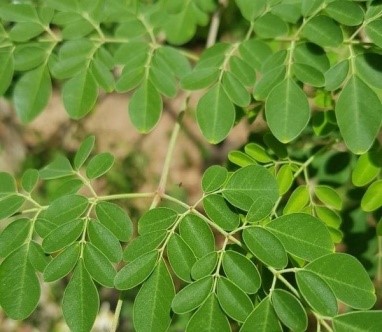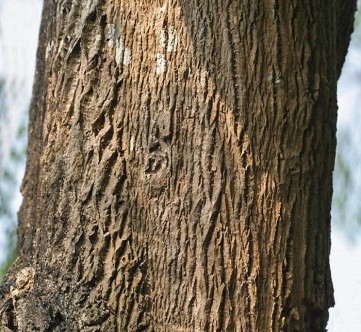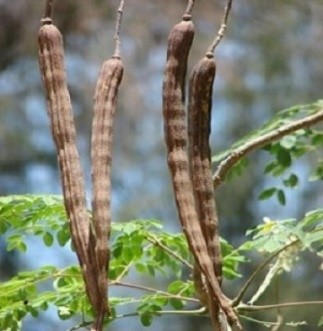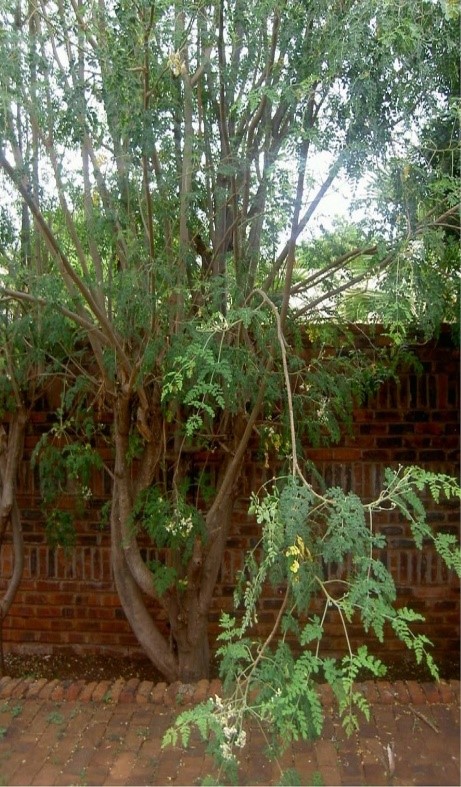Trees
Moringa oleifera Lam.
Moringa oleifera Lam.
Description :
This plant is tropical tree. It is medium
sized evergreen or deciduous tree and can grow up to the height of 10-12m and
the roots are deep. The bark is grey and corky. The branches are thin and week.
The leaves of this plant are compound and alternate and are about 7-60cm long,
with each pinnate bearing 5 or 6 pairs of leaflets that are dark green. Flowers
are fragmented and about 7 to 14 mm long and have cream colour. The fruit is a
typically 3-valved capsule, about 10-60cm in length. The young fruit is green
and when turns mature its colour changes into brown at maturity. The mature
fruit splits open along each angle to expose the seeds. The capsule contains 10-
20 round seeds, 1-3 cm in diameter. Seeds contain a large amount of oil.
Distribution :
This plant is originated from the hills of the Himalayas. It is now
naturalized in most African countries, Caribbean islands and in Central
America. It is an important crop in Pakistan, India, Ethiopia, the Philippines,
and Sudan. This plant grows from sea level up to an altitude of 600m, but it
can be found up to 1000m in the Himalayas, it grows better where annual
rainfall is about 1000-2000mm. However, it is tolerant of drought and survives
where rainfall is as low as 400mm.
Uses :
This plant has many uses including edible,
medicinal, industrial, and agricultural. Its leaves are full of protein; they
can be used for livestock feeding. Oil from the seeds can be used in different
industries like manufacturing of perfumes, paints, lubricants, and other
things. Leaves are used for the agricultural purposes because they have amazing
growth enhancing capabilities for other crops like soybean, coffee etc. Leaves
have high iron content and they be used to treat anemia. Its roots and bark can
be used for the treatment of cardiac and circulatory problems.
(Parrotta,
1993)



